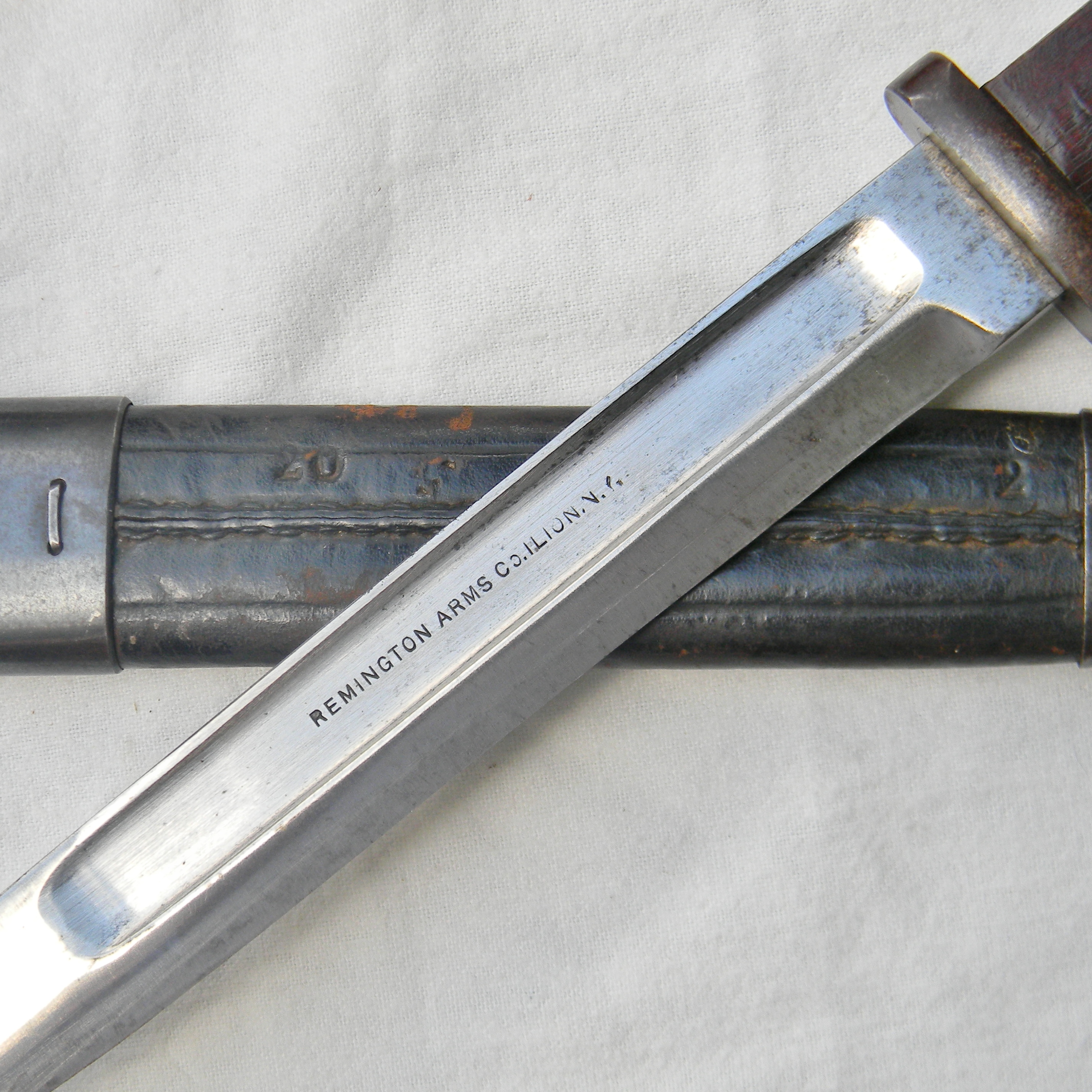

These have wood grips and a brass pommel. Some new-made M1891/31 bayonets were produced by the firm J.C. Strange and unique mounting systems are a common characteristic of bayonets made for rifles that weren't originally intended to mount a bayonet. The unusual trapezoidal muzzle ring is unique to this bayonet. The scabbards were shortened by cutting a section out of the middle and crudely brazing the two ends together.

Modifications to the bayonet included shortening the blade, cutting off the muzzle-ring, and replacing the muzzle-ring with the strange trapezoidal wedge, which slides into part of the carbine's jury-rigged bayonet mount. The modified carbines and bayonets are designated the M1891/31 Engineer's Carbine. 5,000 cavalry carbines were converted by the Argentine automobile maker HAFDASA- Hispano Argentina Fabrica de Automoviles Sociedad Anonima (Spanish-Argentine Automobile Factory, Incorporated). It was modified into its present configuration in 1931, when Argentina added a bayonet lug to the M1891 Mauser Cavalry Carbine for use by military engineers. This example was originally made by the firm of W. The bayonet is a modified M1879 sword bayonet, formerly used with the 11.15 mm. Ricasso (right): "Modelo Argentino 1891" in arc over Argentine Crest (ground) over "U4374" Ricasso (left): "Weyersberg" over "Kirschbaum & Co." over "Solingen" Most M1891 rifles and bayonets were exported to the USA in the 1950s and 1960s, when Argentine export laws required that the national crest be ground away before being sold. Production switched to aluminum grip, mid-1893, after producing 40,000 brass grip bayonets. Brass-gripped bayonets were made 1892–93. They went ahead with the brass grip scales, initially, so as not to further delay production. However, the prototype bayonets turned out heavier than the Argentines liked, so they made a number of design changes (thinner blade, slimmer hilt, and others). The grip metal is an alloy of aluminum, with 6 percent copper.Īrgentina opted for the 15.75 inch blade, after seeing that Chile was going to adopt a shorter (10-inch blade) bayonet for their Mausers. The aluminum grip scales were part of an effort to lighten the bayonet. According to Webster's well-documented book on Argentine Military Rifles: There has been a lot of fiction spread regarding the brass grips being for the Navy, for NCO's, and the like. Most have aluminum alloy grips, like this example. The rifle with which this example was issued was made in 1900 by Deutsche Waffen-und Munitionsfabriken (DWM). I have tried this blade with an identical scabbard from a Steyr M1871/84 and the result is exactly the same. The blade on this bayonet will not quite insert fully, leaving 1 or 2 mm. The scabbard appears to be an Austrian M1888, which was also used on M1871/84 bayonets made by Steyr for export. Both bayonet and scabbard are numbered alike, indicating that they were paired during service (somewhere). This example’s scabbard is a replacement.

The bayonets would have been supplied with the standard German leather-body scabbard. This example also has "1.c" stamped into the wood grip. It is possible that the AC mark may be related to Argentina's inspection process. This replaced the earlier "E.N" Ejército Nacional (National Army) property mark. The "RA" inside an oval is an Argentine property mark, representing República Argentina. Both examples have the same “RA” mark on the pommel and "AC" mark on the lower spine. This example has no maker mark remaining on the ricasso, however, another example observed was marked, Weyersberg, Kirschbaum & Co. According to Webster, these were never issued to the Army and those remaining in military stores were sold to Peru. Some may have been used by the Provincia de Buenos Aires (Province of Buenos Aires). The 5,000 bayonets were on-board ship for Argentina by March 1, 1892, 18 days after the contract was signed (1892 was a leap year).Īn Argentine collector indicates that his contacts confirmed that the bayonets furnished included both M1871 and M1871/84 types. The contract specified inclusion of a “sabre-bayonnette German M88.” Rifles and bayonets were inspected in Germany by the Argentine Comisión de Técnica Armamento before being crated for shipment. German M1888 Commission Rifle.Ĭolin Webster’s research, published in, Argentine Mauser Rifles 1871–1959, documents Argentina’s urgent 1892 contract to purchase 5,000 German M1888 Commission Rifles from Ludwig Loewe & Co.


 0 kommentar(er)
0 kommentar(er)
